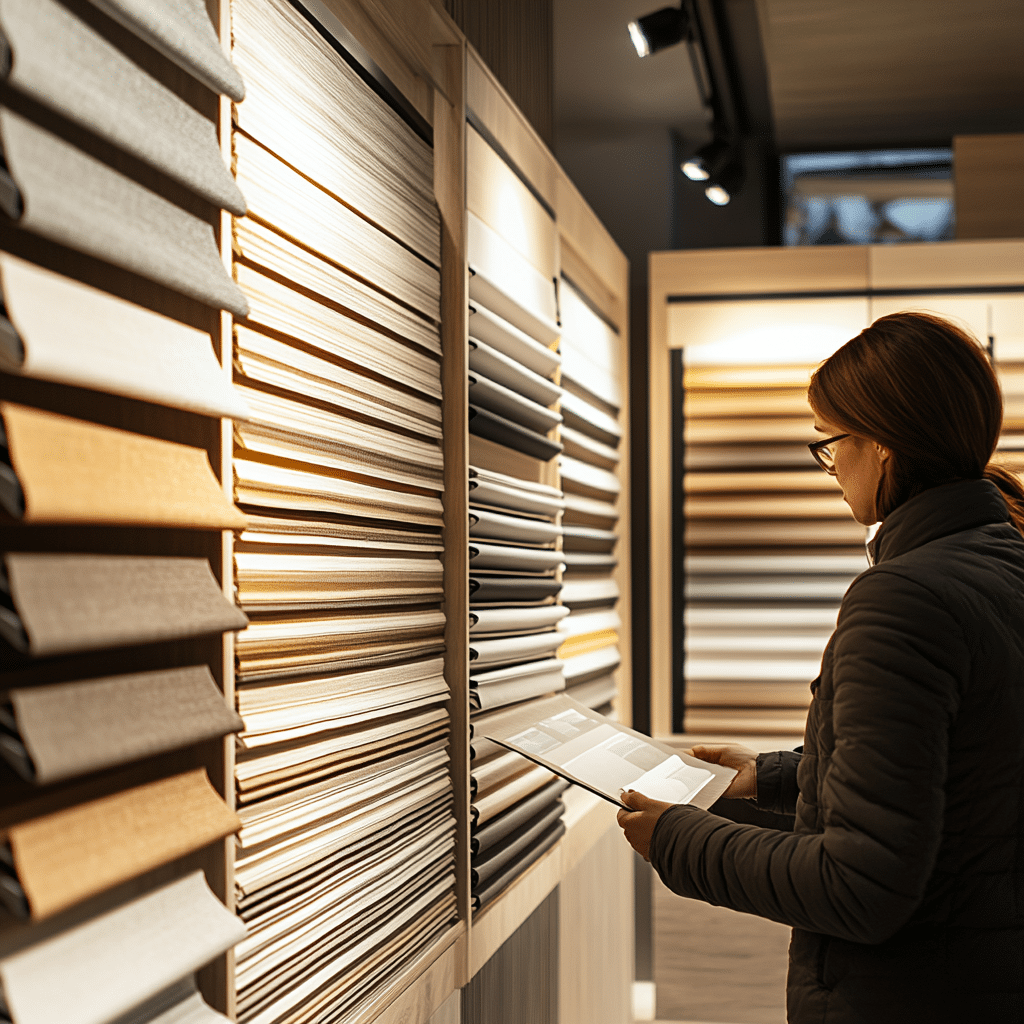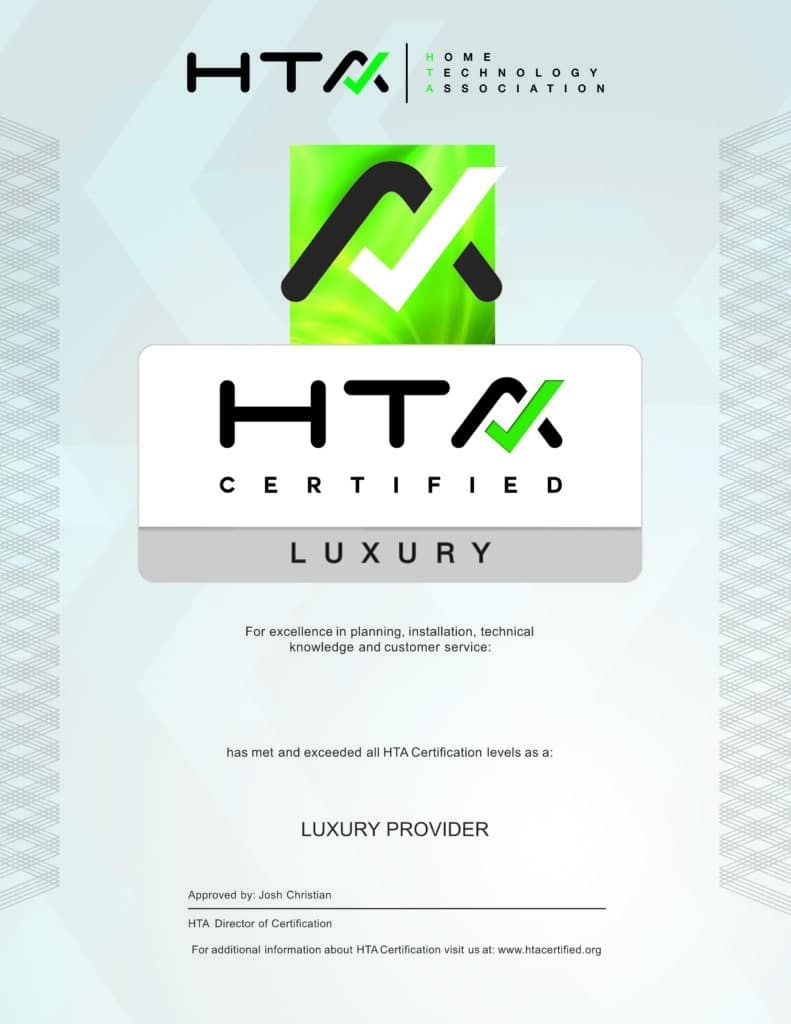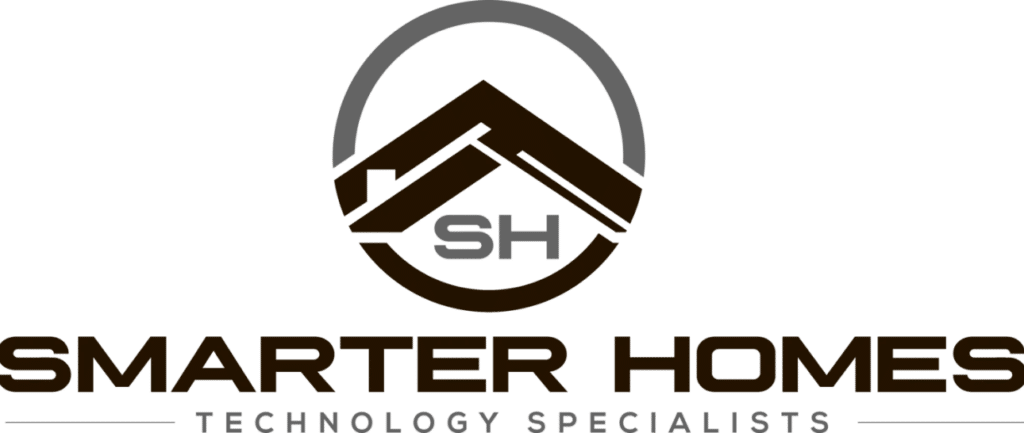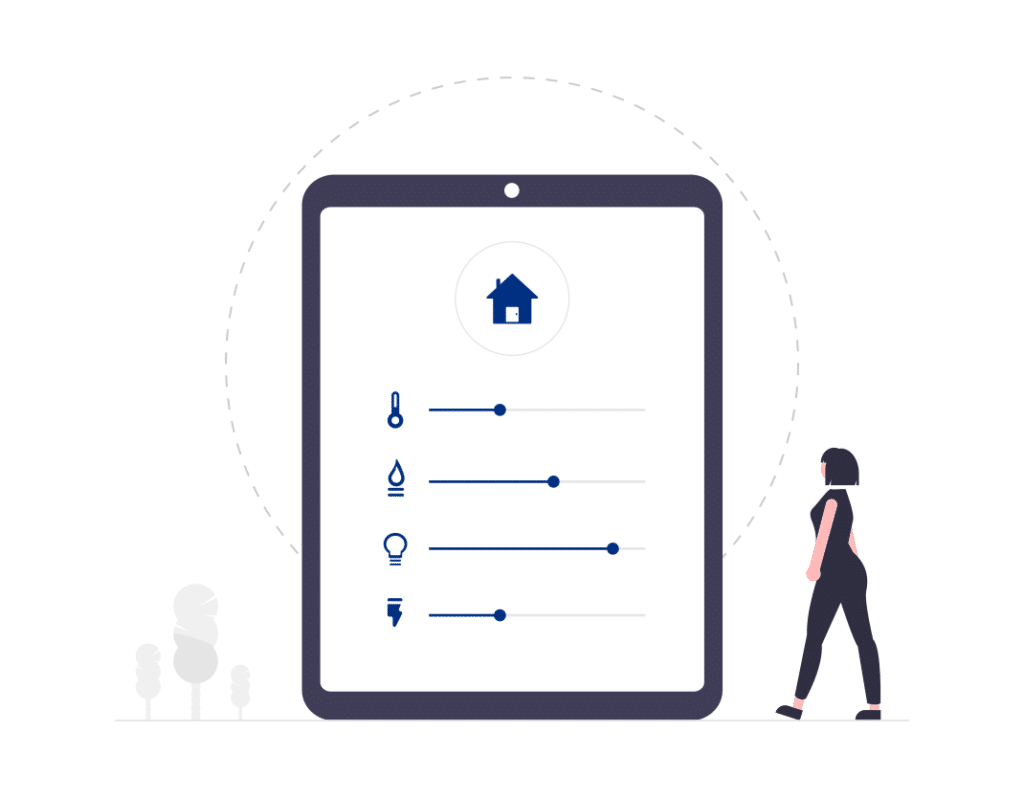When you’re looking for premium window treatments, brands like The Shade Store and Hunter Douglas often top the list. Both offer high-quality products, but the real difference lies in their approach to technology and smart home integration—particularly when it comes to Lutron’s advanced shading solutions. Before you make your decision, here are five things you absolutely need to know!
1. The Shade Store: Limited Lutron Offerings
While The Shade Store carries reputable names like Hunter Douglas, Lutron, and their own house brand, they only offer a small portion of Lutron’s full product line. In fact, The Shade Store only provides about 10% of Lutron’s advanced shading solutions, meaning clients may miss out on the full potential of what Lutron can do for their smart home.
This limited offering can be a dealbreaker for homeowners looking for more comprehensive, customizable options that can seamlessly integrate with their smart home systems. If you’re after full integration and functionality, you might find yourself constrained by the choices available through The Shade Store.
2. Hunter Douglas Shade Offerings: A Strong Option for Smart Homes
Hunter Douglas, on the other hand, offers a more technology-driven solution with their PowerView and PowerView Plus systems. These shades are designed for better integration into your smart home, offering Wi-Fi connectivity and hardwiring options for improved performance. Their intuitive app allows you to control your shades, schedule actions, and customize settings with ease.
While Hunter Douglas is still catching up on full third-party integration capabilities, it’s a much better option than what The Shade Store typically offers when it comes to smart home compatibility. It’s also more affordable than Lutron, though it may come with some limitations in terms of overall system integration.
3. Installation Challenges at The Shade Store
One of the biggest issues with The Shade Store isn’t just about limited Lutron product selections—it’s the “turn-key” installation process. At Smarter Homes of Austin, we’ve seen many clients face challenges with The Shade Store’s incomplete installations, particularly when it comes to powering and integrating shades.
The Shade Store does not install the necessary power panels that are crucial for powering and communicating with the shades in a whole-home setup. Instead, they temporarily connect the shades to power using an extension cord and a makeshift power supply to test the basic up and down functions. Once those limits are set, they remove this “test wire,” leaving the shades unplugged and non-functional.
This approach means that if clients want their shades fully operational on the day of installation, they’re advised (by The Shade Store) to have a separately hired electrician on-site to install the low-voltage power panels. Even then, The Shade Store’s job ends once basic single-room handheld control is working—they don’t set up the full home automation system. This leaves clients with an incomplete system unless they hire a smart home professional to handle the whole-home integration. At Smarter Homes of Austin, we ensure your shading system works from day one, without requiring extra coordination or incomplete solutions.
4. Design Pitfalls: Smart Solutions vs. Door Obstructions
In another project, The Shade Store recommended a solution that created a significant inconvenience for the client. They proposed mounting a shade above a large door, which meant the client would have to raise the shade every time they wanted to open or close the door. This would interrupt the seamless use of the door and diminish the overall convenience of the shade.
At Smarter Homes of Austin, we recommended a smarter, more functional solution: mounting a battery-powered shade directly onto the door itself. This way, the client could use the door freely without needing to worry about the shade’s position. Our approach ensures the shade moves smoothly with the door, allowing for full functionality while maintaining a sleek design. No need to raise the shade or compromise convenience—just effortless, smart design that works with your lifestyle.
5. Smarter Homes of Austin: Full Integration from Start to Finish
At Smarter Homes of Austin, we don’t just install shades—we deliver a fully integrated, luxury experience. From the selection of shades to complete integration with your home’s automation system, and all of the tasks in between, we handle everything. Our clients don’t have to worry about coordinating with electricians or dealing with partial installations. We ensure that every shade is wired, powered, programmed, and fully functional within your smart home ecosystem.
One key benefit of our approach is that you can control all your shades at once, from a single app or smart control system. This type of full integration is what separates us from companies like The Shade Store, who leave clients managing a patchwork system that lacks the cohesive smart functionality they expected.
Final Takeaway: The Shade Store vs. Smarter Homes of Austin
While The Shade Store offers well-known brands like Hunter Douglas and Lutron, their limited Lutron offerings and lack of full integration expertise can leave clients with incomplete shading solutions. If you want a fully automated, luxury experience where everything works together seamlessly, Smarter Homes of Austin provides a comprehensive approach from start to finish. We ensure that your shades don’t just look great—they work perfectly with your entire smart home system, delivering the convenience and functionality you deserve.
The Shades Store: A Closer Look at Integration
When considering window treatment solutions, many homeowners and businesses compare brands like The Shades Store and other providers sourcing Hunter Douglas products. While both offer a wide selection of fabrics, there are distinct differences in their approach to technology and integration.
The Shades Store is primarily focused on selling fabrics and stylish designs, but their knowledge of integration and smart home products, particularly when it comes to Lutron or whole home control applications, tends to fall short. On the other hand, companies that offer Lutron shading products tend to have developed more comprehensive solutions with a deeper understanding of the seamless integration needed to enhance client experiences.
An Experience with The Shades Store and Smarter Homes of Austin
Smarter Homes of Austin recently worked with a client who wanted the luxury and convenience of Lutron shades but was constrained by a tight budget. The client was exploring alternative routes to cut costs without sacrificing the high-end feel Lutron provides. They approached The Shades Store, who claimed they could offer Lutron products as part of a more affordable solution.
Pete, a representative from Smarter Homes of Austin, decided to step in to ensure that the products offered aligned with the client’s current smart home setup. He arranged to meet with The Shades Store’s representative at the home site to go over the details. It quickly became apparent that The Shades Store only offered about 10% of Lutron’s product line and didn’t have the option for Triathlon or Palladium Wireless (battery-powered solutions), which were crucial for the project.
The Installation Process: Where the Issues Begin
One of the most significant differences between The Shades Store and fully integrated services like Smarter Homes of Austin is the installation process. While The Shades Store offers a range of shades, their installation leaves much to be desired when it comes to ensuring a smooth, tech-enabled experience.
In the case of the client, The Shades Store proceeded with the installation by mounting the shades but didn’t connect the power supply, leaving the system incomplete. The shades were initially controlled using a piece of whipcord to manually raise and lower them. Instead of fully wiring the shades to integrate with the home’s low voltage power supply systems, the installer simply plugged the shade into a power brick, which in turn was plugged into the wall—a temporary fix at best.
They set up the basic up and down limits for the shades but didn’t program any of the smart functions, leaving the technology aspect untouched. Furthermore, the power supply for the shades was left disconnected, hidden in the back of a closet. The installer completed the work and billed the client without ensuring the shades were fully operational as a whole home solution.
To make matters worse, it was now up to the client to install the hub and program it themselves, a process that should have been handled by professionals familiar with the integration requirements. This lack of full service is where The Shades Store falls short compared to Smarter Homes of Austin’s more comprehensive, hands-on approach.
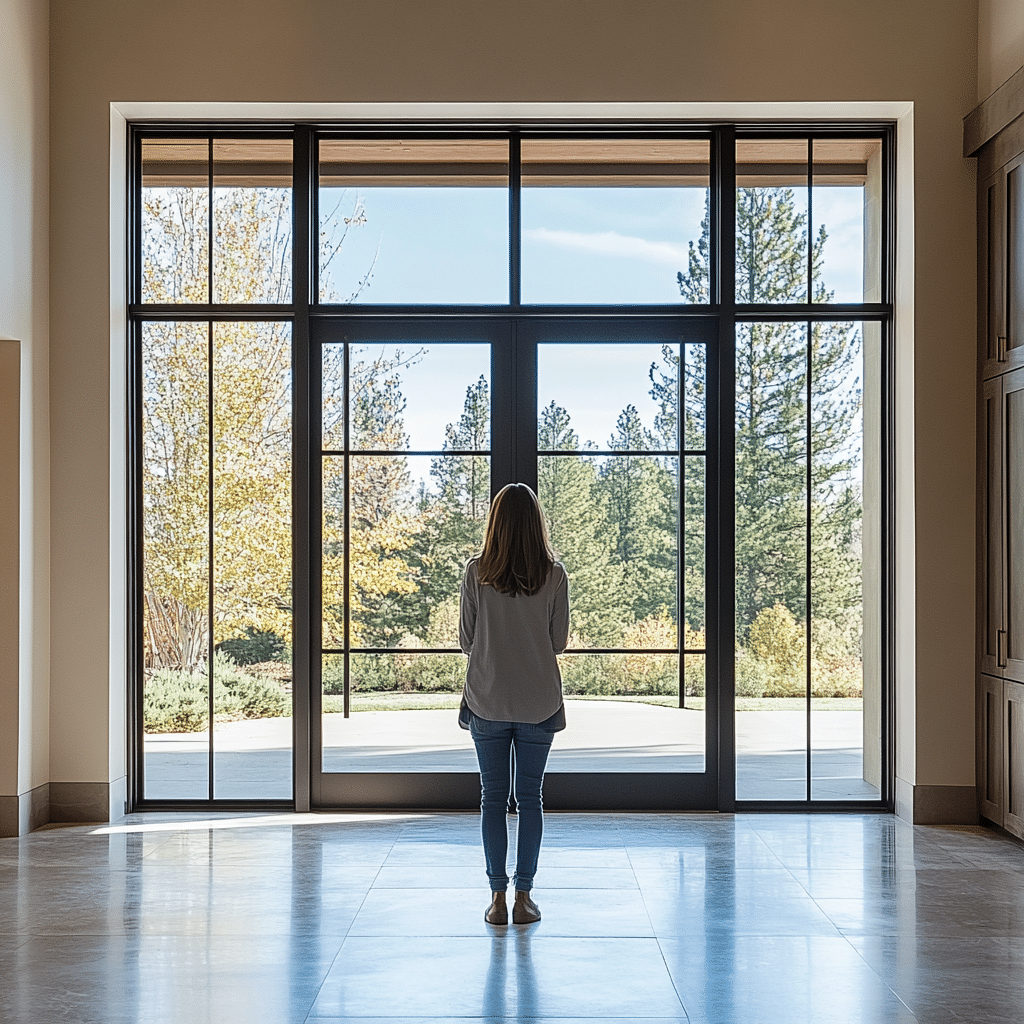
The client also faced a dilemma regarding a large glass door that needed shading. They wanted a solution that would provide sufficient coverage while maintaining a seamless, functional design. The Shades Store’s sales rep insisted that the only option was to mount the shade above the door, claiming that shades could not be mounted directly to the door itself. This approach, however, came with a major issue.
Pete, the Smarter Homes of Austin representative, pointed out that mounting the shade above the door would result in a significant light gap around the edges, meaning the shade would fail to provide the full coverage the client needed. Not only would this allow light to leak in around the shade, but it would also reduce the overall functionality and aesthetic. Additionally, the shade would have to be raised every time the door was opened, as it would obstruct the door’s movement when left down. The reverse roll installation proposed by The Shades Store would further detract from the luxurious look the client desired.
Smarter Homes of Austin proposed a more refined solution. Pete explained that contrary to the Shades Store’s claim, there were multiple ways to mount the shade directly onto the door, such as using Palladium side brackets. By taking careful measurements, this solution would allow the shade to operate smoothly, clearing the door handle and providing the necessary coverage to block out light fully. Pete reassured the client that this method would not only solve the light gap issue but also deliver a superior, custom look.
Exploring Other Options: Deco Window Fashions and Hunter Douglas
Before settling on The Shades Store, the client explored other options like Deco Window Fashions and Hunter Douglas, hoping to find the right balance between style, technology, and affordability.
At Deco Window Fashions, the client searched for a solution but ultimately didn’t find what they were looking for fabric wise. The selection didn’t meet their expectations, so they continued their search.
The client then considered Hunter Douglas, a brand known for its more technologically advanced shades. Hunter Douglas offers PowerView and PowerView Plus, systems designed to provide a more integrated experience. With PowerView Plus, for example, the hub is built directly into the power supply, which means the shades can be connected to Wi-Fi and even hard-lined into the internet for better stability.
Hunter Douglas also stands out for helping customers set up their shades using a user-friendly app, allowing for custom settings and more control. While it’s a more affordable option compared to Lutron, it does come with some limitations. Hunter Douglas currently lacks the ability to fully integrate with many third-party whole home control systems, though this capability is expected in the near future. As the technology continues to evolve, users may face a learning curve with these new updates, but it remains a more budget-friendly alternative.
Choosing The Shades Store
Ultimately, the client chose to move forward with The Shades Store, attracted by the reputation of their shades and fabrics, as well as the promise of offering Lutron products at a seemingly more affordable price. Unfortunately, as the experience with Pete from Smarter Homes of Austin revealed, The Shades Store’s approach to technology integration fell short, leaving the client in need of more comprehensive support to achieve their goals.
Operations and Technical Aspects: Understanding the Options
When it comes to shading solutions, several operational aspects play a critical role in creating a fully integrated system. Unfortunately, The Shades Store rep didn’t have a clear understanding of these options, which is why Smarter Homes of Austin stepped in to provide clarity.
One important feature the client wanted was for all the shades in the room to communicate and work together seamlessly. Pete explained that with Lutron’s Triathlon, which is an entry-level motorized shade solution, the shades could be mounted directly to the door and still “talk” to the other shades in the room, ensuring that they all operate in sync.
For higher-end options, Sivoia QS wireless technology allows shades to be controlled wirelessly, but with the stability of wired communication as well. Using a 2-conductor wire to power and send signals to the shades, Sivoia can still operate wirelessly via strategically placed hubs or repeaters throughout the house. This setup allows commands, such as “all shades down,” to be sent simultaneously, making it easy to control the entire house with a single press of a button.
However, in cases where hubs are not installed, clients would need to manually go to each shade and press a button to operate them—an impractical solution for larger homes or clients looking for true automation. While this may work for those with lower budgets or homeowners who have house managers handling daily tasks, it certainly isn’t ideal for those seeking the convenience of full integration.
Power and Connectivity: Wiring and Battery Solutions
Pete also discussed the various ways shades could be powered. Some shades use a 4-wire solution, with two wires for power and two for communication, as seen with Sivoia motors. This wiring ensures stable and continuous communication between shades, providing a reliable system. For battery-powered shades, while they can be a convenient option, they do require regular recharging unless a more advanced auto-recharging system is installed. This involves moving the charger and setting up a charging schedule to ensure the shades remain functional, which can be cumbersome for clients who prioritize convenience.
When integrating shading systems, electricians typically bring power supplies to the shades using low voltage (DC), similar to doorbell wiring, as opposed to high-voltage AC. This allows for a clean, efficient setup where shades can be powered without relying on standard plugs or high-voltage outlets, ensuring safety and streamlined integration with other home systems.
Controlling All Shades at Once
As Pete explained, one key benefit of full home automation is the ability to control all shades in the house at once. This can be achieved through the proper installation of hubs and repeaters, which send wireless commands to all shades simultaneously. With a properly installed system, clients can easily lower or raise all their shades with a single button, avoiding the hassle of managing each shade individually.
Smarter Homes of Austin Recommendations
Smarter Homes of Austin strongly recommends keeping all shading and home automation systems within one ecosystem to maintain simplicity. This ensures that clients don’t need multiple remotes or hubs to control their shades, leading to a more seamless experience.
For those who prioritize the look and feel of fabrics, Smarter Homes of Austin encourages clients and designers to visit stores like Deco Window Fashions or The Shades Store. These stores are ideal for hands-on fabric selection, which is often a key aspect for interior designers when planning a home’s layout.
Overall Takeaways: A Lesson in Integration
Looking back on the client’s journey, there are clear takeaways from the experience. One of the main issues with The Shades Store’s approach is that it feels like a strategy to expose the client’s budget, only to later push them toward the store’s house brand. This often leads to a complicated journey where the client has to coordinate with multiple vendors just to get their shades working with an app or automation system.
In contrast, Smarter Homes of Austin offers a true turnkey solution, simplifying the process from start to finish. While Smarter Homes may come with a higher price tag, it provides the most seamless, integrated experience, ensuring that all aspects of home automation, including shading systems, are installed and programmed with precision.
In this particular situation, the sales team at The Shades Store, along with the interior designer involved, seemed unfamiliar with the technological aspects of shading systems. Their focus was on fabrics and design, which is understandable given their typical responsibilities. However, this lack of knowledge became a disservice to the client, who was looking for advanced smart home integration. Learning more about the technology side of shading systems, particularly Lutron, would allow them to provide a more complete and satisfying service to customers in similar situations.
Unfortunately, The Shades Store wasn’t able to sell Lutron to its fullest potential in this case. Without a full understanding of Lutron’s offerings, clients were left with incomplete solutions, missing out on the opportunity for a fully integrated, luxury experience.
For clients seeking a smooth, hassle-free process with fewer vendors involved, Smarter Homes of Austin remains the best option—offering luxury, convenience, and a system that truly works.
Citations:

